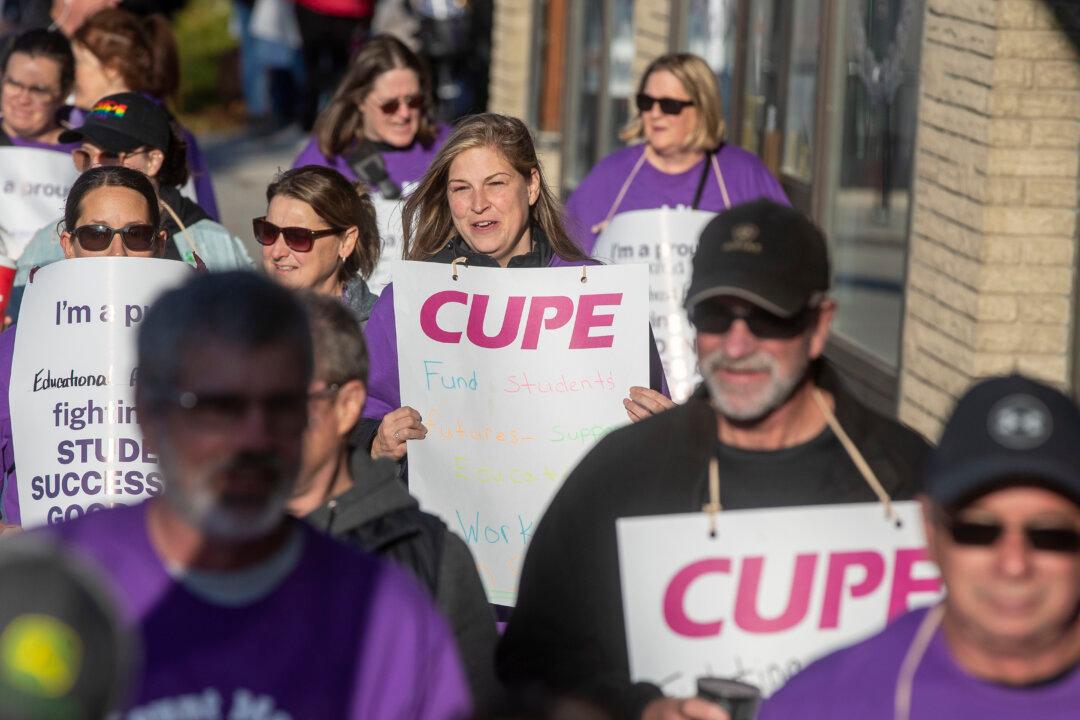The Ontario government has filed an application with the province’s labour board to stop job action by thousands of education workers who walked off the job on Nov. 4.
In a tweet on the afternoon of Nov. 4, Education Minister Stephen Lecce said the government is “using every tool available” to “end this illegal strike and get kids back to class.”





